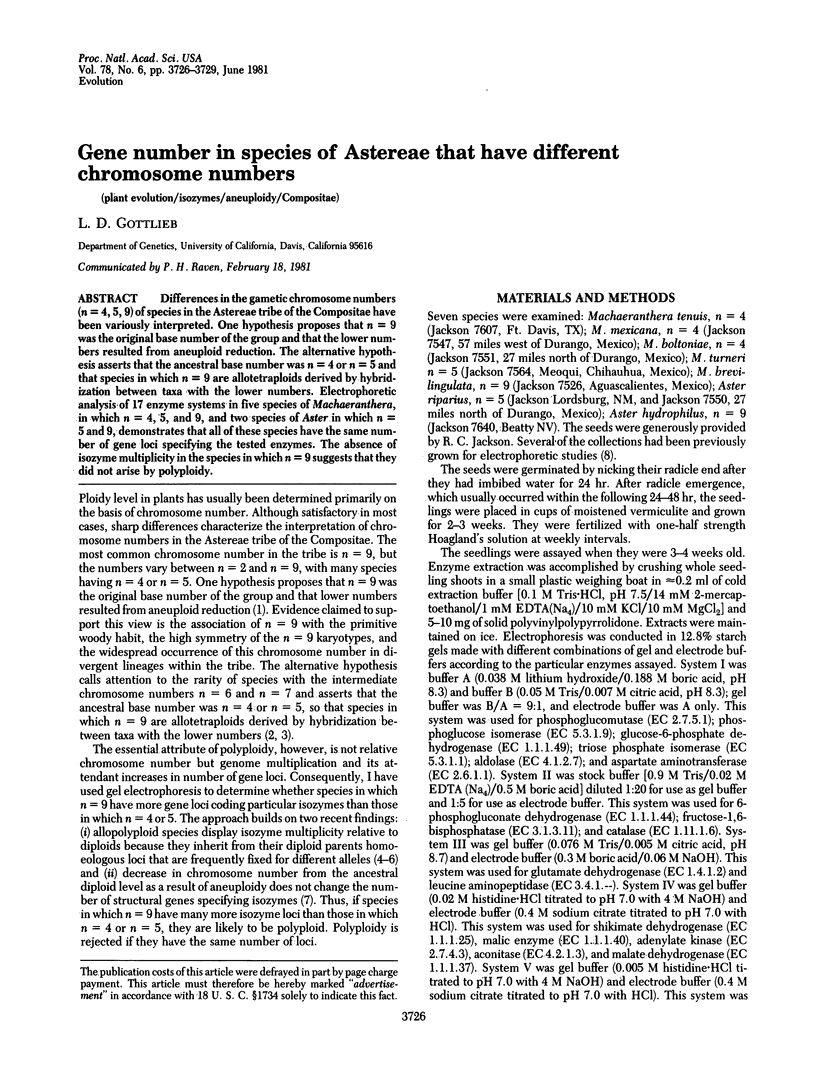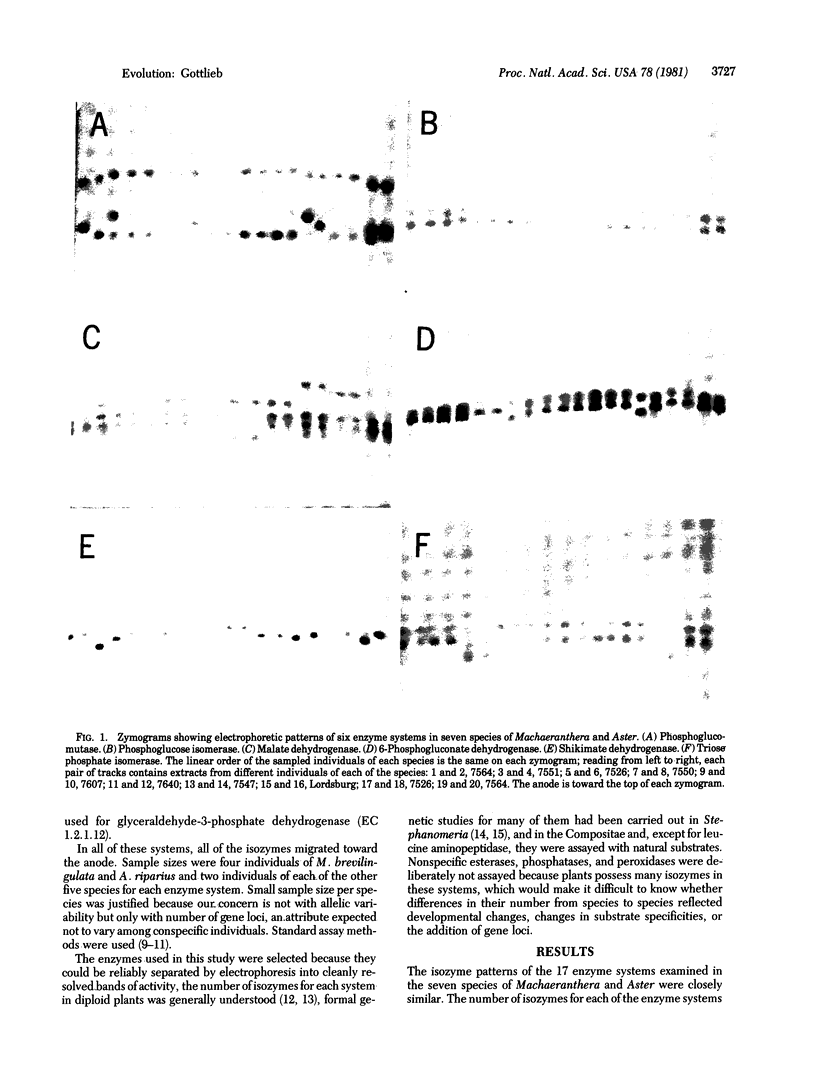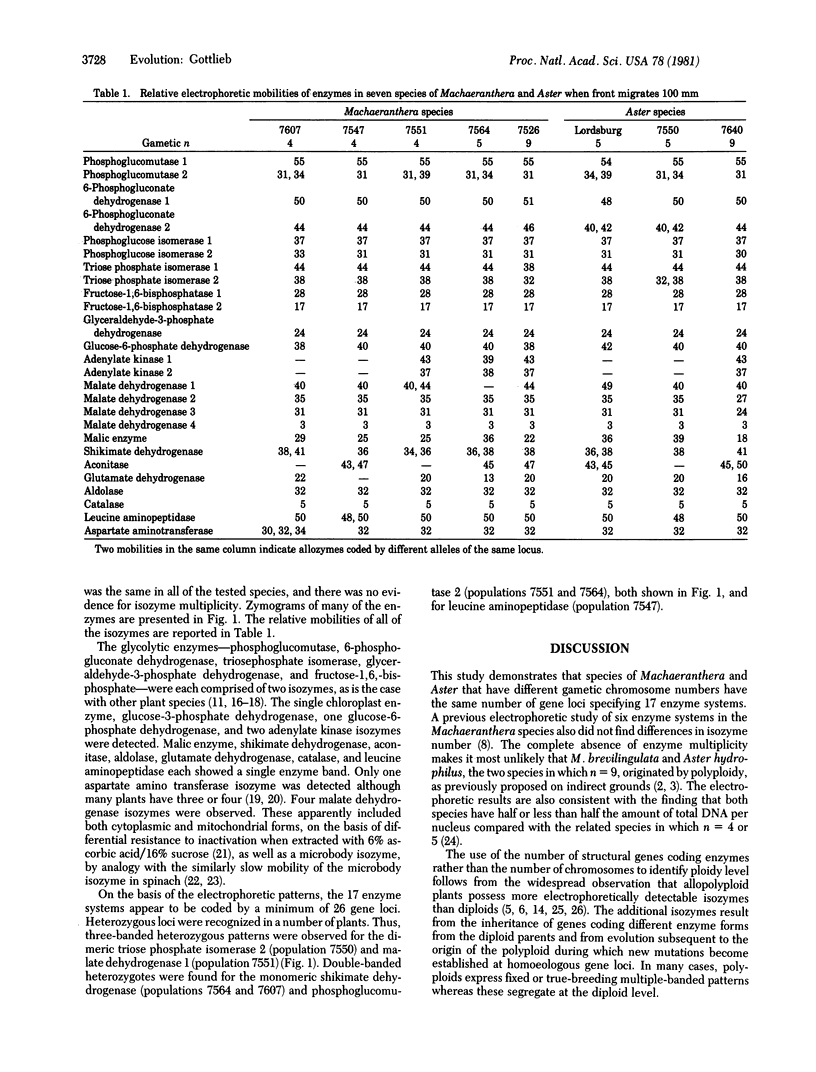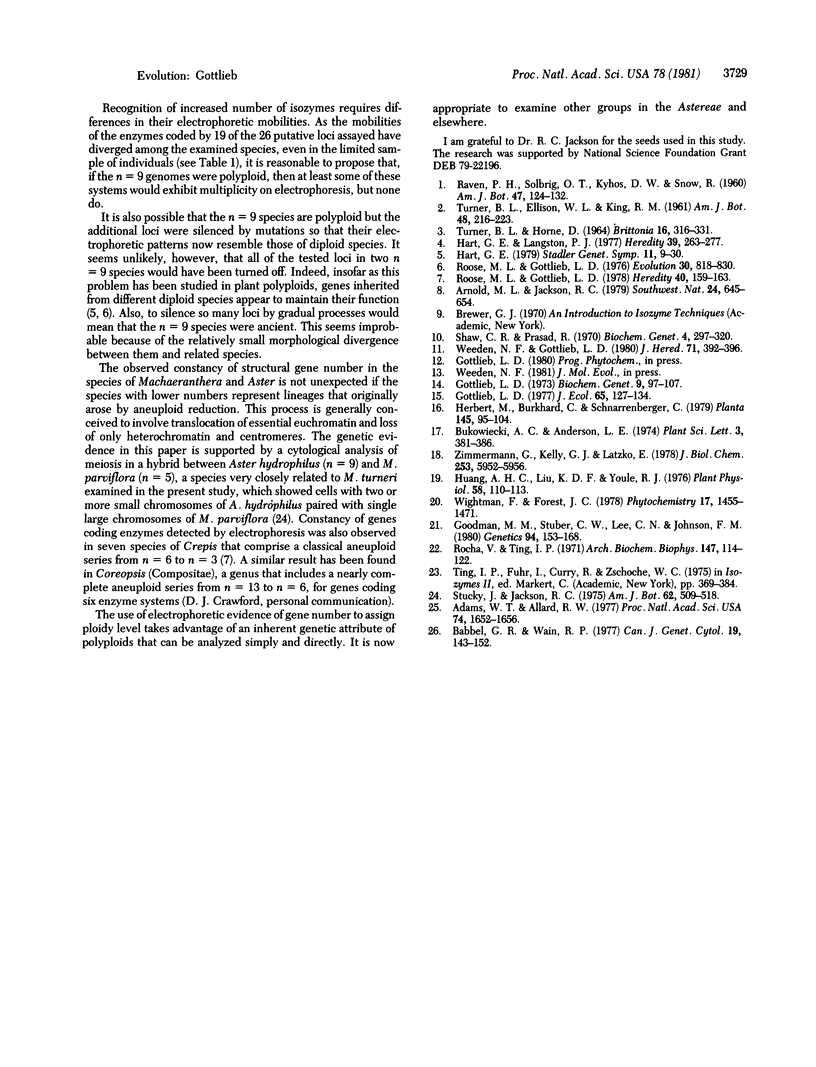Abstract
Differences in the gametic chromosome numbers (n = 4, 5, 9) of species in the Astereae tribe of the Compositae have been variously interpreted. One hypothesis proposes that n = 9 was the original base number of the group and that the lower numbers resulted from aneuploid reduction. The alternative hypothesis asserts that the ancestral base number was n = 4 or n = 5 and that species in which n = 9 are allotetraploids derived by hybridization between taxa with the lower numbers. Electrophoretic analysis of 17 enzyme systems in five species of Machaeranthera, in which n = 4, 5, and 9, and two species of Aster in which n = 5 and 9, demonstrates that all of these species have the same number of gene loci specifying the tested enzymes. The absence of isozyme multiplicity in the species in which n = 9 suggests that they did not arise by polyploidy.
Keywords: plant evolution, isozymes, aneuploidy, Compositae
Full text
PDF



Images in this article
Selected References
These references are in PubMed. This may not be the complete list of references from this article.
- Adams W. T., Allard R. W. Effect of polyploidy on phosphoglucose isomerase diversity in Festuca microstachys. Proc Natl Acad Sci U S A. 1977 Apr;74(4):1652–1656. doi: 10.1073/pnas.74.4.1652. [DOI] [PMC free article] [PubMed] [Google Scholar]
- Goodman M. M., Stuber C. W., Lee C. N., Johnson F. M. Genetic control of malate dehydrogenase isozymes in maize. Genetics. 1980 Jan;94(1):153–168. doi: 10.1093/genetics/94.1.153. [DOI] [PMC free article] [PubMed] [Google Scholar]
- Gottlieb L. D. Genetic control of glutamate oxaloacetate transaminase isozymes in the diploid plant Stephanomeria exigua and its allotetraploid derivative. Biochem Genet. 1973 May;9(1):97–107. doi: 10.1007/BF00485595. [DOI] [PubMed] [Google Scholar]
- Huang A. H., Liu K. D., Youle R. J. Organelle-specific Isozymes of Aspartate-alpha-Ketoglutarate Transaminase in Spinach Leaves. Plant Physiol. 1976 Jul;58(1):110–113. doi: 10.1104/pp.58.1.110. [DOI] [PMC free article] [PubMed] [Google Scholar]
- Rocha V., Ting I. P. Malate dehydrogenases of leaf tissue from Spinacia oleracea: properties of three isoenzymes. Arch Biochem Biophys. 1971 Nov;147(1):114–122. doi: 10.1016/0003-9861(71)90316-x. [DOI] [PubMed] [Google Scholar]
- Shaw C. R., Prasad R. Starch gel electrophoresis of enzymes--a compilation of recipes. Biochem Genet. 1970 Apr;4(2):297–320. doi: 10.1007/BF00485780. [DOI] [PubMed] [Google Scholar]
- Zimmermann G., Kelly G. J., Latzko E. Purification and properties of spinach leaf cytoplasmic fructose-1,6-bisphosphatase. J Biol Chem. 1978 Sep 10;253(17):5952–5956. [PubMed] [Google Scholar]








